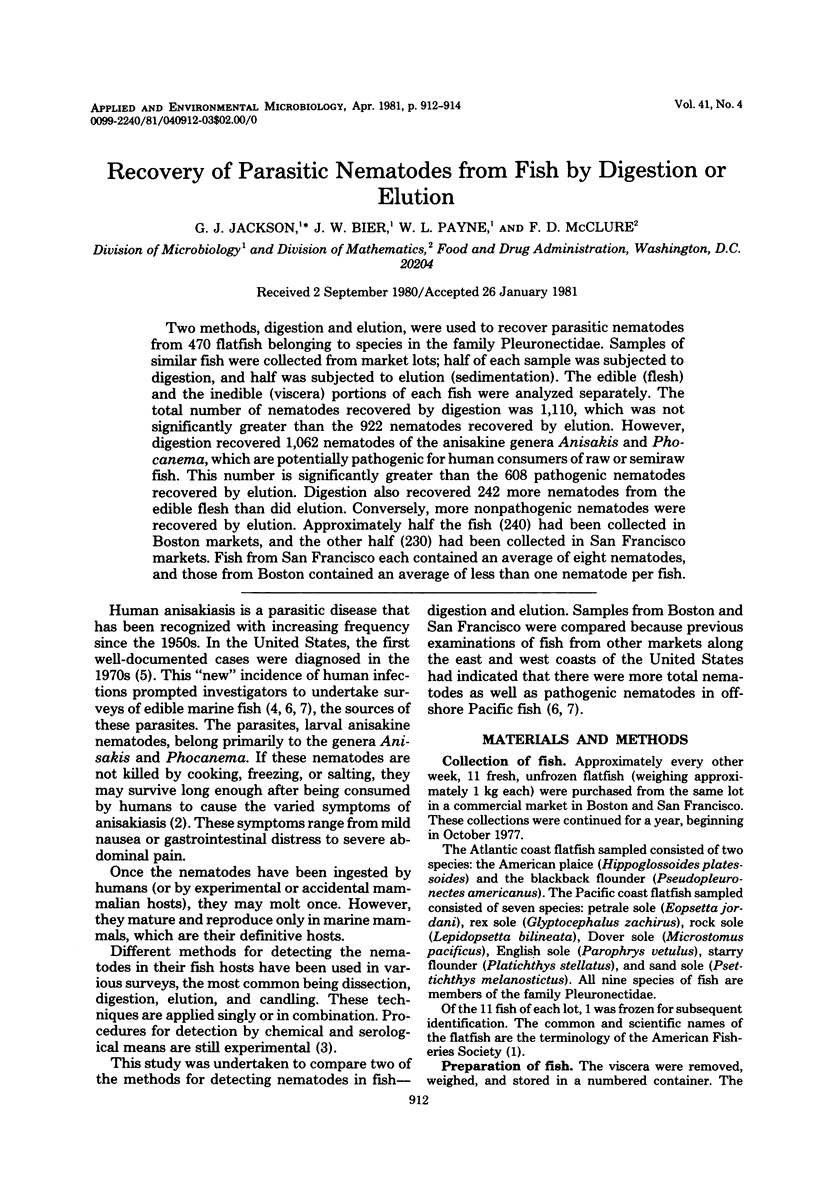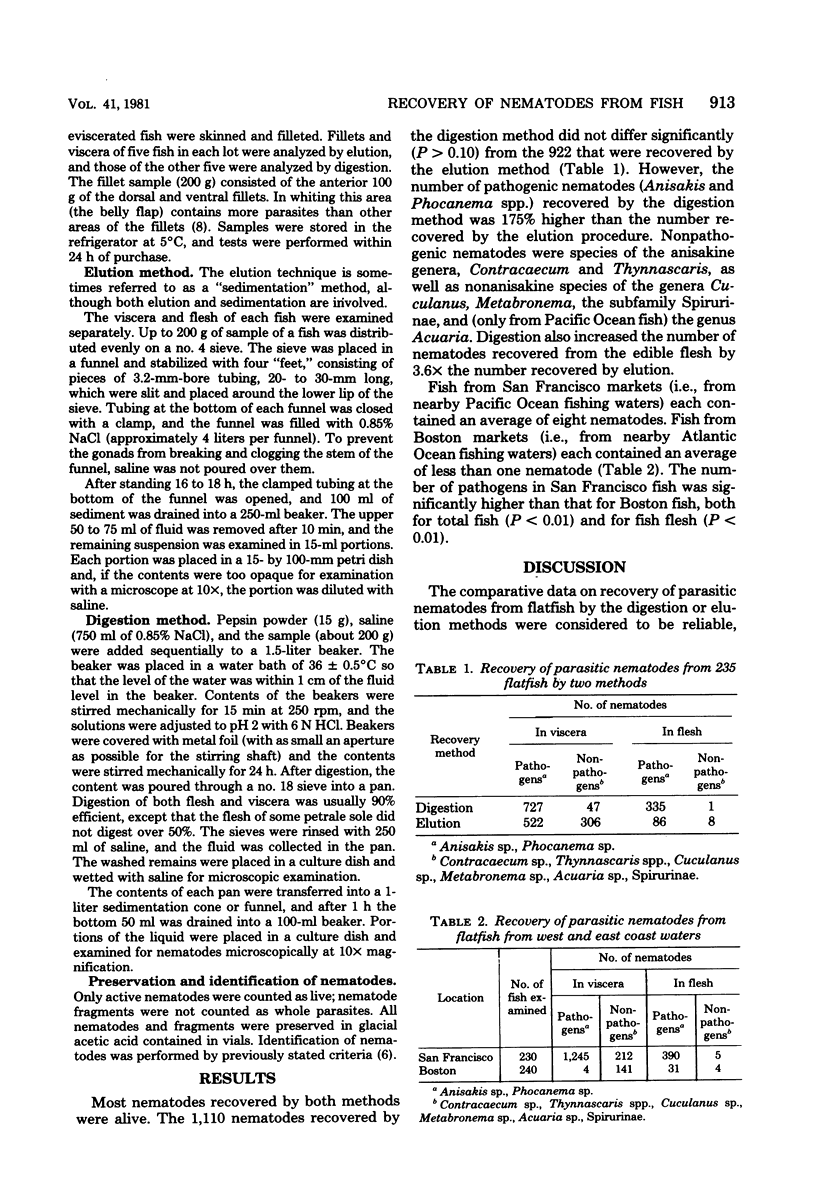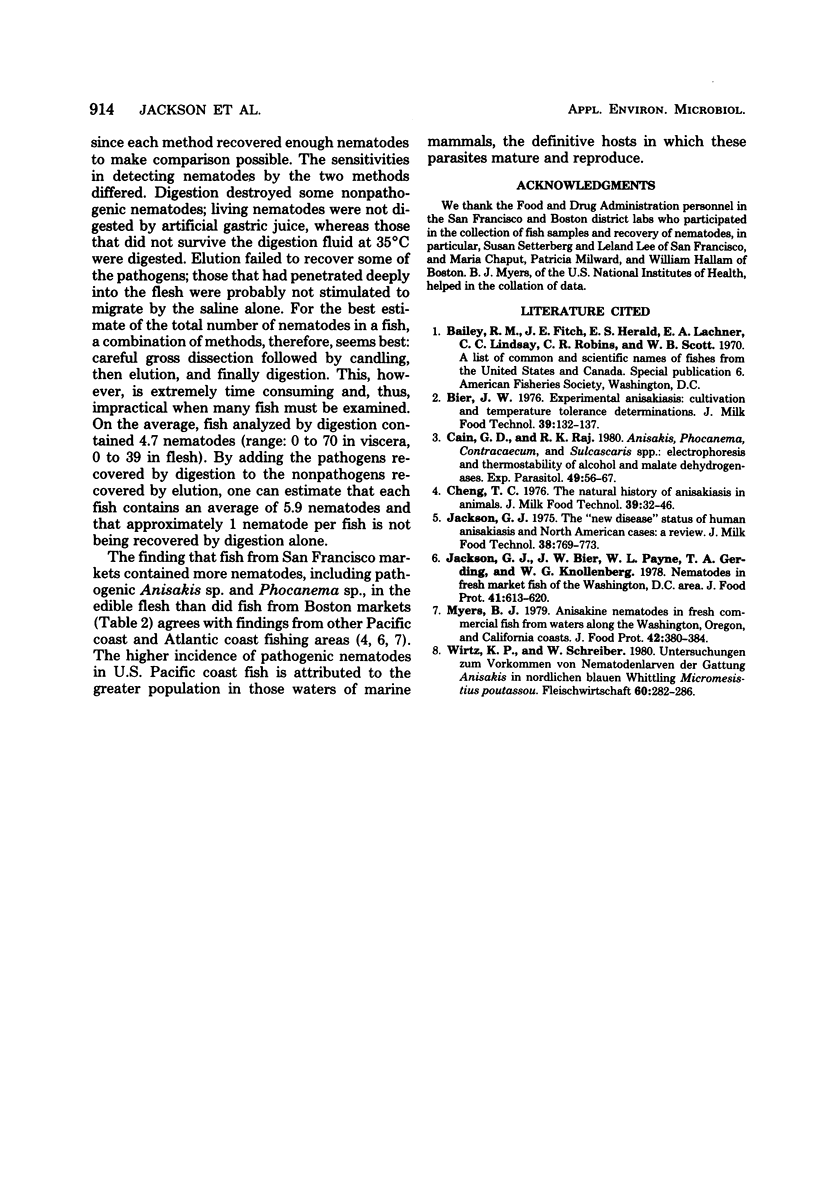Abstract
Two methods, digestion and elution, were used to recover parasitic nematodes from 470 flatfish belonging to species in the family Pleuronectidae. Samples of similar fish were collected from market lots; half of each sample was subjected to digestion, and half was subjected to elution (sedimentation). The edible (flesh) and the inedible (viscera) portions of each fish were analyzed separately. The total number of nematodes recovered by digestion was 1,110, which was not significantly greater than the 922 nematodes recovered by elution. However, digestion recovered 1,062 nematodes of the anisakine genera Anisakis and Phocanema, which are potentially pathogenic for human consumers of raw of semiraw fish. This number is significantly greater than the 608 pathogenic nematodes recovered by elution. Digestion also recovered 242 more nematodes from the edible flesh than did elution. Conversely, more nonpathogenic nematodes were recovered by elution. Approximately half the fish (240) had been collected in Boston markets, and the other half (230) had been collected in San Francisco markets. Fish from San Francisco each contained an average of eight nematodes, and those from Boston contained an average of less than one nematode per fish.
Full text
PDF


Selected References
These references are in PubMed. This may not be the complete list of references from this article.
- Cain G. D., Raj R. K. Anisakis, Phocanema, Contracaecum, and Sulcascaris spp.: electrophoresis and thermostability of alcohol and malate dehydrogenases from larvae. Exp Parasitol. 1980 Feb;49(1):56–67. doi: 10.1016/0014-4894(80)90056-9. [DOI] [PubMed] [Google Scholar]


